Tests of a drifting stratostat. Launch of Rogozin and LoRa into the stratosphere
Recently, one can more and more often see launches of amateur latex weather balloons, which have as their payload an insulated box with a camera, a GPS beacon and a power source. The flight of such devices is usually limited to 2-3 hours, during which the device reaches the stratosphere and lands 80-100 kilometers from the launch site.

Preparing to launch our drifting stratostat
Can a stratospheric balloon fly longer, farther and more stable? Yes maybe. Stratostats of the Zero-Pressure and Super-Pressure categories come to the rescue. We chose Zero-Pressure as our first experience, as This technology is time-tested and quite simple.
Flight technology
The essence of this technology is to maintain a “zero” pressure inside the gas envelope, while the Super-Pressure envelopes drift due to an excess of gas pressure. As you climb, the gas expands. When the peak pressure is reached, the meteorological balloon bursts, and the Zero-Pressure envelope releases excess pressure and remains drifted in the jet currents until sunset. When the sun sets, the air begins to cool and the apparatus decreases. For flights lasting more than 1-2 days, a ballast reserve is needed, it compensates for the loss of gas lift (helium, hydrogen).
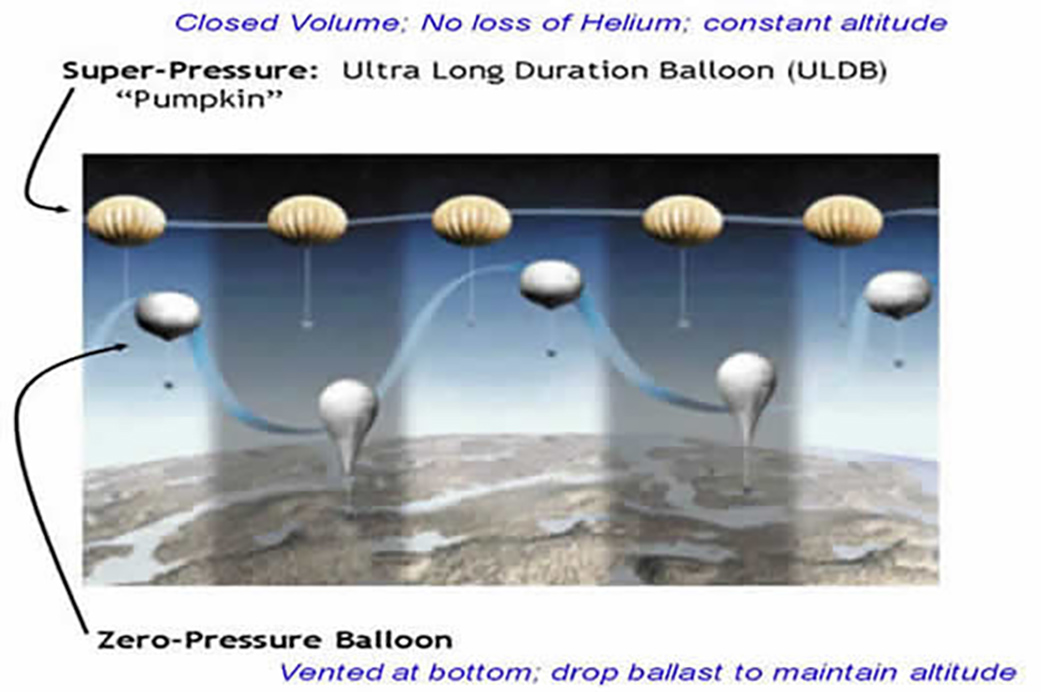
Image of flight profiles of Zero-Pressure and Super-Pressure stratostats
Shell
For the first launch, we made a pumpkin-shaped shell with a volume of 170m3, a height of 5 meters and a diameter of 8 meters. Pumpkin shape, as it most optimally distributes the pressure inside the shell. We did not require heavy lifting capacity and altitude from the first flight, the task was to obtain information about the moment of achieving neutral buoyancy and the drift of the device in order to further increase the duration of flights and the volume of shells (Zero-Pressure flies from 2 to 55 days).
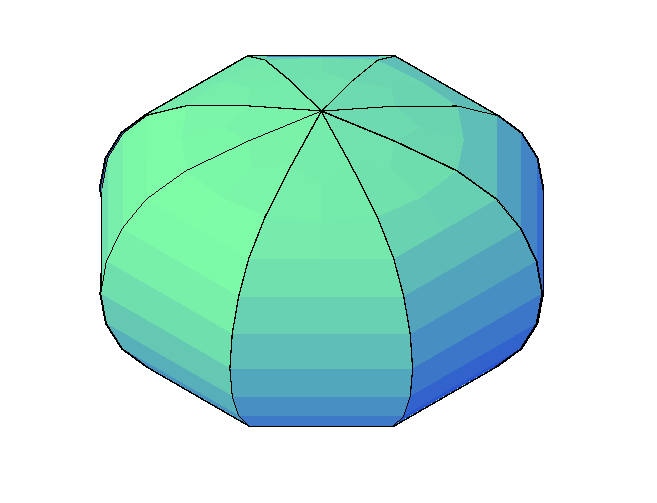
Eight Segment Pumpkin Shell Model
Technical part
The tasks of the stratosphere balloon were divided into two stages:
- The first step (return) - a modular platform with a parachute
- Second stage (drifting) - Zero-Pressure shell with a radiosonde
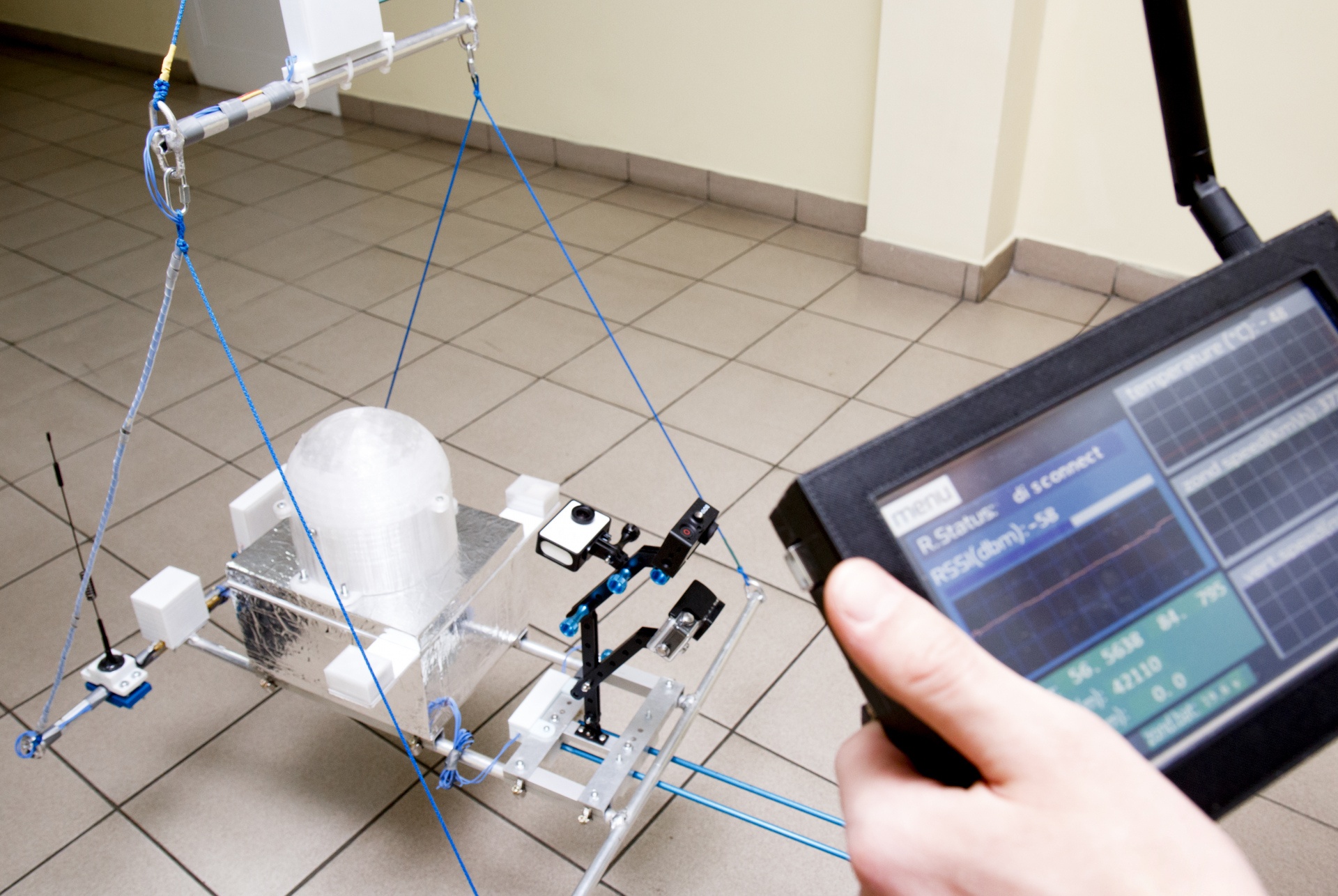
Modular platform with telemetry receiving tablet
The first stage, a modular platform
The first stage platform is an aluminum frame, which, in addition to its main function (fixing modules), is part of the antenna system and radiator for the Lawmate 1.2GHz video transmitter and 433MHz LoRa modem amplifier with 1 and 2 watts of power.
It has the following communication channels:
- LoRa 433MHz, telemetry transmission
- Lawmate 1.2GHz, video streaming with OSD
- GlobalStar Location Information
- GSM, telemetry
- 433 / 868MHz search beacons, search for the device in the landing area by signal level
The flight controller that collects and controls power relays and transistors is based on the AtMega2560. To help the flight controller, a LoRa-GSM modem was made on the AtMega328p, which collects telemetry from the PC and transfers it to the ground.
The video is recorded on 2 shielded GoPro Hero 4 Black with a view of the horizon and Yi 2k with a view of the gas shell.
The power source is 2 NiMH 12v 4500mah and LiPo 11.1v 2000mah batteries.
The second stage, the radiosonde The
radiosonde of the second stage has a very important function - undocking of the stages. Without undocking, the payload will fly to China, Mongolia or North Korea, which we certainly do not need.
To accomplish this task, the radiosonde determines the moment of achievement of neutral buoyancy (drift), after which it waits 30 minutes and makes undocking.
In addition to this task, if you are lucky with cellular coverage, the radio probe communicates via GSM and transmits the data recorded in the memory in the form of a flight path, temperature change profiles and battery charge.
The power source is a LiPo 11.1v battery with a capacity of 3800mah.
Payload
Since this is a test, we could not launch a commercial payload, but it would also be wrong to leave the launch without a payload. The ADA launches program by the Russian Ministry of Defense ended in 2013, and, since it was the only client at the ADS in DKBA, since that time there were no ADA launches in Russia and the CIS. Our, albeit indirect, task was to draw attention to the ADA. Through a survey in one of the space communities of the Vkontakte social network, we determined the desired payload, it became the seven with Rogozin.

Rogozin as a payload of the first stage
Launch
4 days before the launch, we submitted a flight plan to the Federal Air Transport Agency, after which on June 2 we received permission at 06:00 in the morning (permission is given on the day of launch).
Preparations for the launch began from the place of the sweep-filling of the shell and the installation of a relay station on the roof, a case with receiving equipment on the ground.

Stratostat gas shell filling

Relay Station (LoRa, Lawmate)
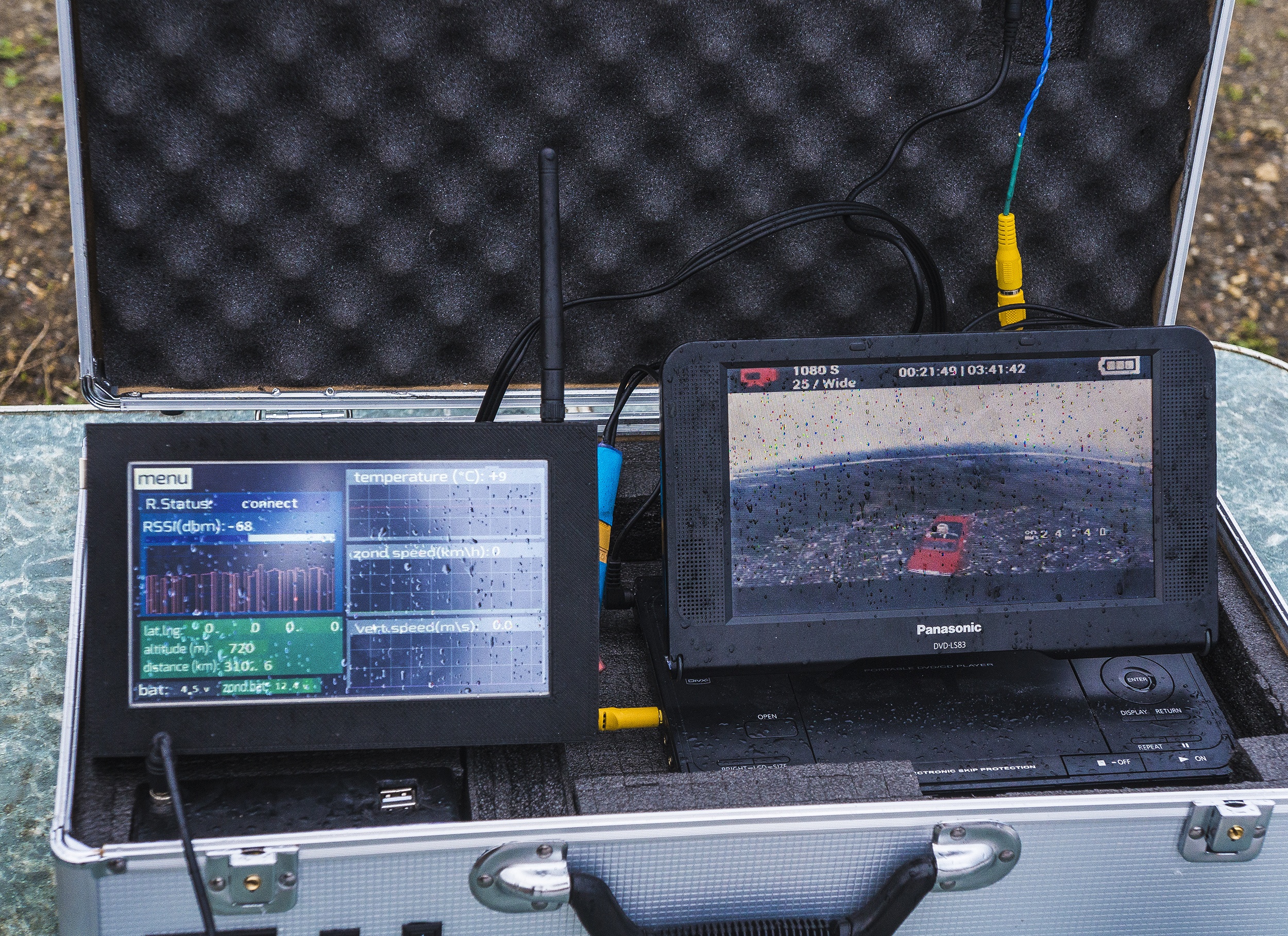
Case with receiving equipment
It took almost four 60-liter helium cylinders to fill the shell, which provided a shell lifting force of 13 kilograms, which is enough to launch 9 kilograms of cargo with a lifting speed of 2.5 m / s.
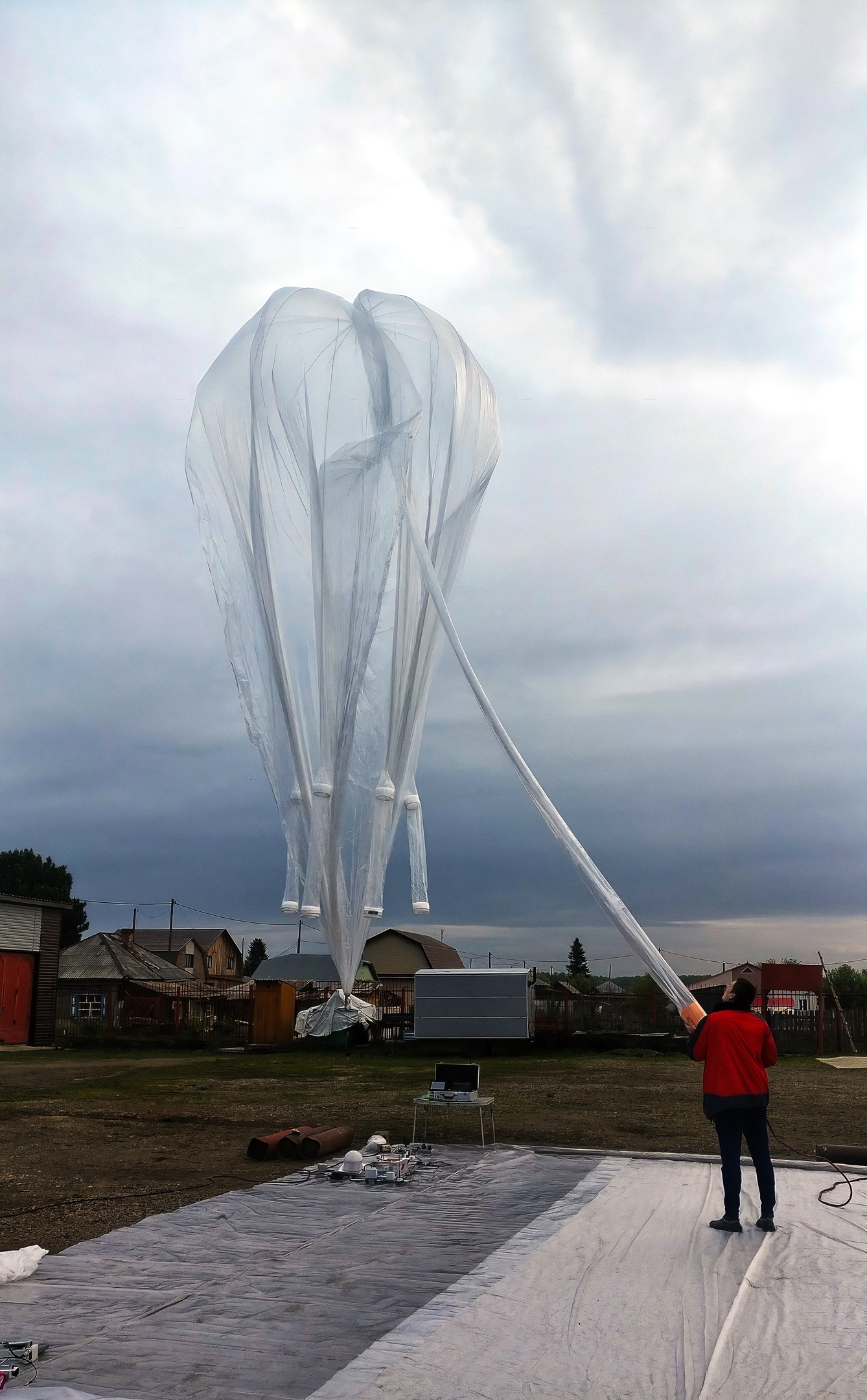
Helium refueling
After filling the shell, we began the launch of the equipment and the step assembly of the apparatus, assembled the first and second steps of the stratospheric balloon. The height of the shell at the start was 10 meters, the total height of the apparatus was 20 meters.
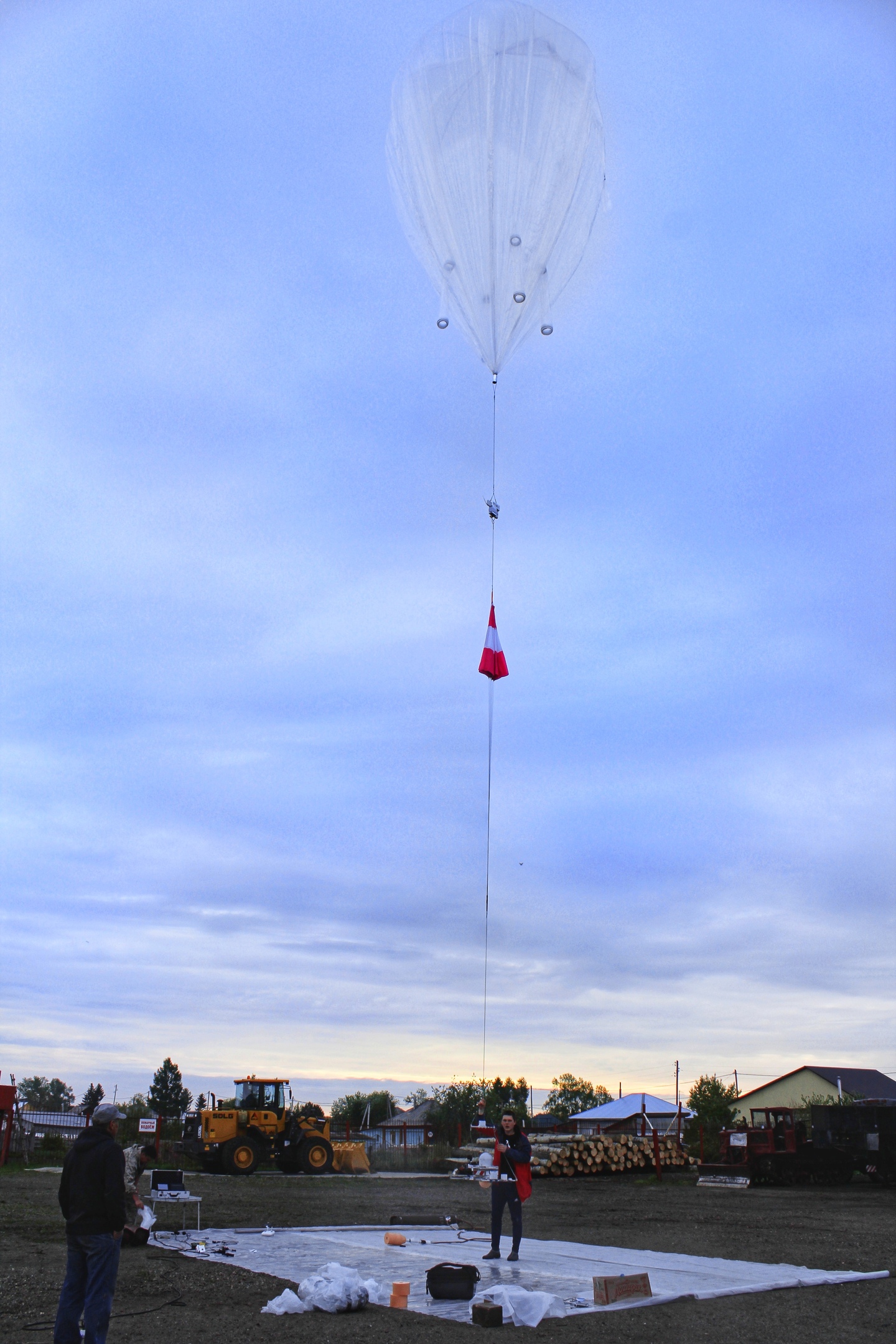
Stratostat 10 seconds before launch
Good calm weather (with the exception of light rain) allowed the stratostat to be launched almost unhindered.
Стратостат поднимался со скоростью 2,5м/с, через 1 час 10 минут он стравил излишки гелия продрейфовал 40 минут, после чего отстыковал первую ступень. Первая ступень начала приземление на парашюте со скоростью 4-5м/с (что заняло 45 минут), в это время вторая ступень продолжила набор высоты, после чего продрейфовала на высотах 18-20км в течение 10 часов и начала ускоряющееся снижение из-за захода солнца.

Инфографика полёта стратостата

Профиль высоты первой ступени
Несмотря на пасмурную погоду LoRa очень хорошо себя показала передавая данные на расстоянии в 120 километров. Видеотрансляция на оборудовании Lawmate 1.2ГГц была доступна на расстоянии до 60 километров, что в подобную погоду тоже неплохо. GlobalStar маяк стабильно работал, передавая каждые 2.5 минуты сведения о местоположении.
Видеоролик запуска аппарата
The second stage was a bit unlucky with cellular coverage; during its flight, it received five GSM connections. Information was obtained on overcoming an altitude of 18 kilometers and landing 16 hours after launch.

Landed first step
In general, the mission was a success. The automatic stratospheric balloon industry in Russia began its revival through private efforts. Gradually, the duration of flights will increase, one and a half to two weeks in the jet streams of the stratosphere is enough to fly around the planet.
A flight of 2-3 days is planned with testing AirMax, iridium communication channels. We’ll test the stratostat as a means of organizing WISP networks with a coverage of more than 150 kilometers (we will check the project Loon and AirBus models).
